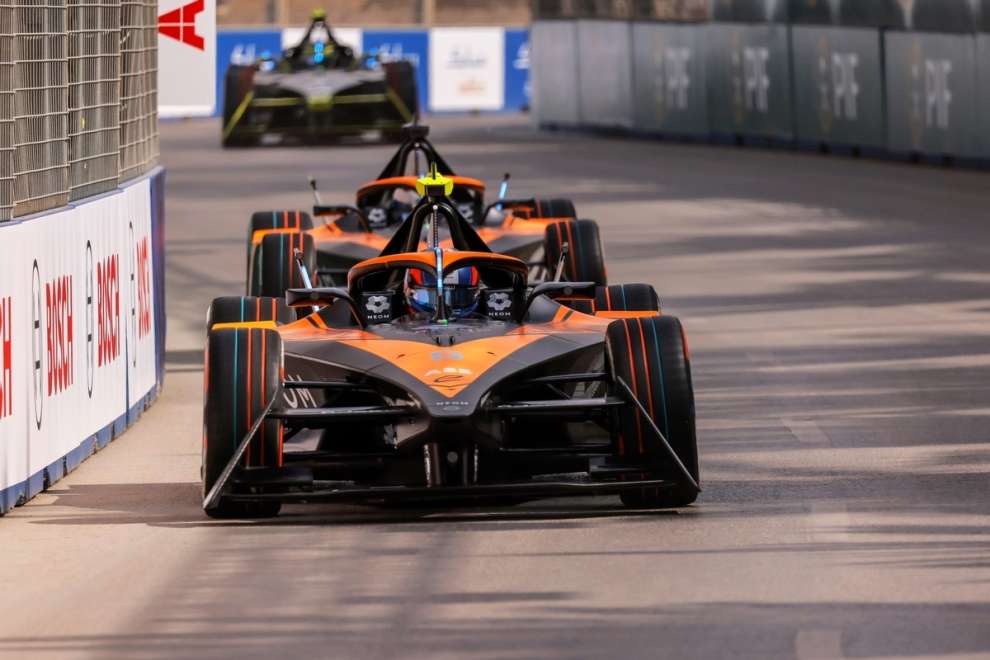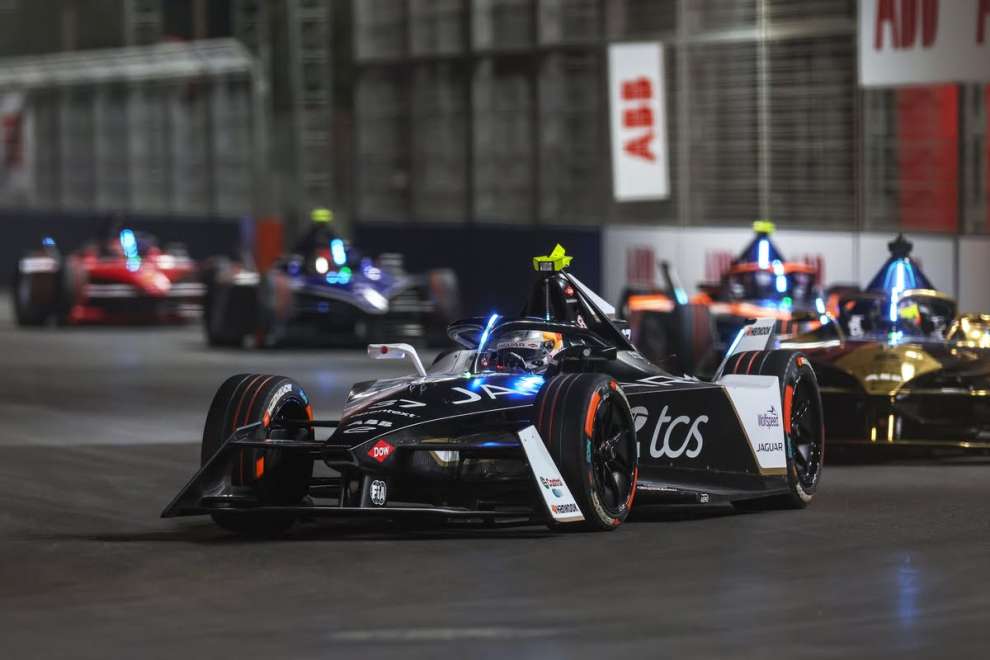By Carlo Platella
Formula E returns to the track for the fourth round of the World Championship, re-embracing the San Paolo track, a welcome innovation from last season. The track enhances the original essence of the championship, winding directly through an urban context and gathering the warmth of a public with a profound motoring culture such as the Brazilian one. In Brazil Formula E finds its origins again also with regards to the dynamics of the E-Prix, with energy management and the race returning to the center of the weekend.
The track
The straight of the sambadrome inaugurates the 2933 meters of the track, connected by 11 curves, mainly narrow and low speed, in stark contrast to the rapid turns of the first two rounds of the world championship. Despite this, in Sao Paulo the average lap distance is significantly higher, reaching 147 km/h in qualifying, compared to 130 km/h in Mexico City and Diriyah.
The merit of this increase is the abundance of straights, which increase energy consumption and discourage you from leading the group in the race, instead rewarding those who travel in the slipstream to save energy. The 2023 E-Prix was already full of exchanges of positions, despite the energy per kilometer available to the teams being almost 5% higher than the stages in Mexico and Saudi Arabia. In Brazil, therefore, a weekend awaits us where energy efficiency will once again be a major protagonist, shifting the emphasis from qualifying to the race. All this unless anomalous decisions were made by the organisers, who in the first two events gave the teams abundant energy, effectively eliminating their management in the race.
Evolving hierarchies
The Sao Paulo E-Prix marks the return to the track a month and a half after the double event in Diriyah. An important period of time, during which the teams were able to analyze the data, develop software, management strategies and adjustments. The break thus acts as a catalyst for an environment that has already shown signs of change in the first races, with the recovery of the Nissan and Stellantis engines.
“I think there's been very little talk about how strong are the Nissan and DS engines”, the thoughts of world championship leader Nick Cassidy. “Rowland, Fenestraz, Hughes, Bird…they're all super competitive. The same goes for Gunther, who dominated in Jakarta and also did very well in Mexico City. The potential of the Nissan and DS powertrains is truly underestimated”. Not even Jake Dennis hides his surprise: “Looking at the energy parameters of Nissan and McLaren that emerged in the race, they were definitely impressive. They used similar energy levels to me. From my point of view, I would say that Nissan and McLaren have improved in terms of energy efficiency.”

Jaguar tries to escape
Mexico City and Diriyah underline the approach of the pursuers, who however will find a different scenario in Sao Paulo. “This track will be a different challenge, with a greater emphasis on energy”reflects McLaren Team Principal Ian James: “It will also be a test for traction performance of our package, which remains an area where we still need to improve”.
Conversely, the city circuit of Sao Paulo presents itself as the ideal hunting ground for Jaguar, historically incisive in traction and braking with a straight steering wheel, and not surprisingly winner of the 2023 edition. The English brand and Nick Cassidy are preparing a preventive escape , in view of a calendar that presents several difficult tracks for the British pack: “Last year the Jaguar-powered cars were not particularly incisive on tracks like Portland and Jakarta, while we did better on circuits like Rome, of which however we will miss two races this year. Furthermore there will be the debut of Shanghai and Misano, which could be four races that will go more in favor of Porsche. There are still 13 races to go, but at least 6 of these will be very difficultthe”.

Beyond the affinities between car and track, as always the difference will be the setup and the ability to read the evolution of the track. Witness Jake Dennis, dominator in race 1 in Diriyah, but far from the top the following day: “On Saturday we had practically no performance compared to Jaguar and Nissan. Nothing is guaranteed. On Friday we won by 13 seconds, while on Saturday we finished twelfth. The competition has gotten closer and if you don't perform at your best you find yourself twelfth, whereas maybe last year I would have finished sixth”. Another sign of an increasingly balanced championship, where nothing can be taken for granted.
#Formula #return #Brazil #race #protagonist
